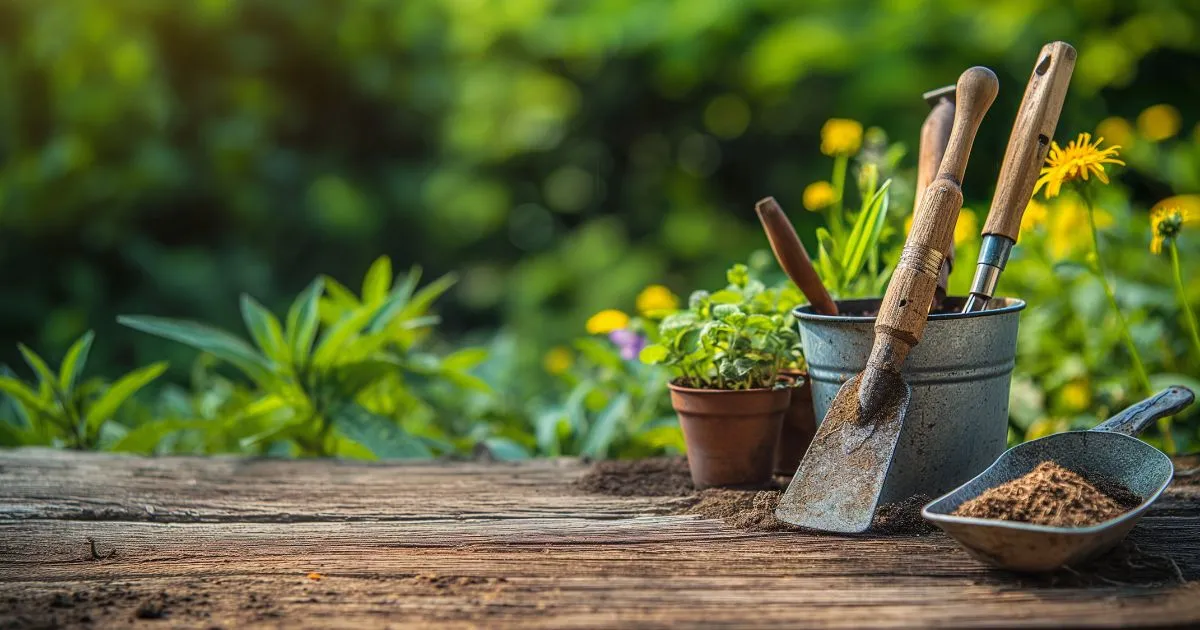Table of Contents
Gardening is a rewarding hobby that allows you to connect with nature, grow your own food, and beautify your outdoor space. However, as any seasoned gardener knows, keeping track of all your tools can be a challenge. This is where a garden tool organizer comes into play. A well-organized garden tool storage system not only saves you time but also extends the life of your tools by protecting them from damage and rust. In this comprehensive guide, we’ll explore everything you need to know about garden tool organizers, from types and benefits to DIY solutions and maintenance tips.
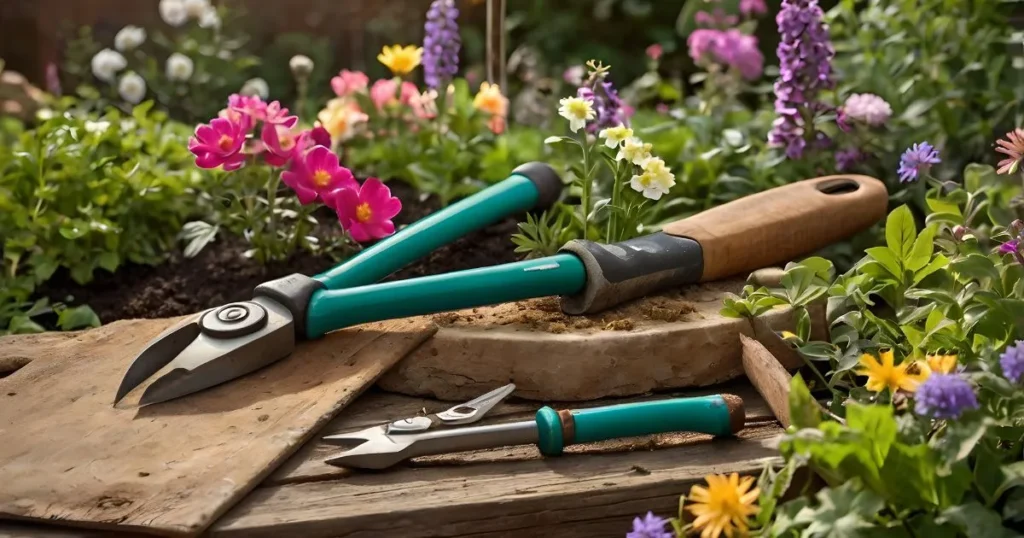
Why You Need a Garden Tool Organizer
The Problem of Disorganized Garden Tools
Without a proper garden tool organizer, your tools can easily become scattered, lost, or damaged. Shovels, rakes, hoes, and pruners often end up in a messy pile in the corner of your shed or garage. This disorganization can lead to:
- Wasted time searching for tools.
- Increased risk of injury from tripping over tools.
- Damage to tools due to improper storage.
The Benefits of a Garden Tool Organizer
Investing in a garden tool organizer offers numerous advantages:
- Saves Time: Easily locate the tools you need.
- Protects Tools: Prevents rust, wear, and tear.
- Maximizes Space: Keeps your shed or garage tidy and efficient.
- Enhances Safety: Reduces the risk of accidents.
- Improves Longevity: Proper storage extends the life of your tools.
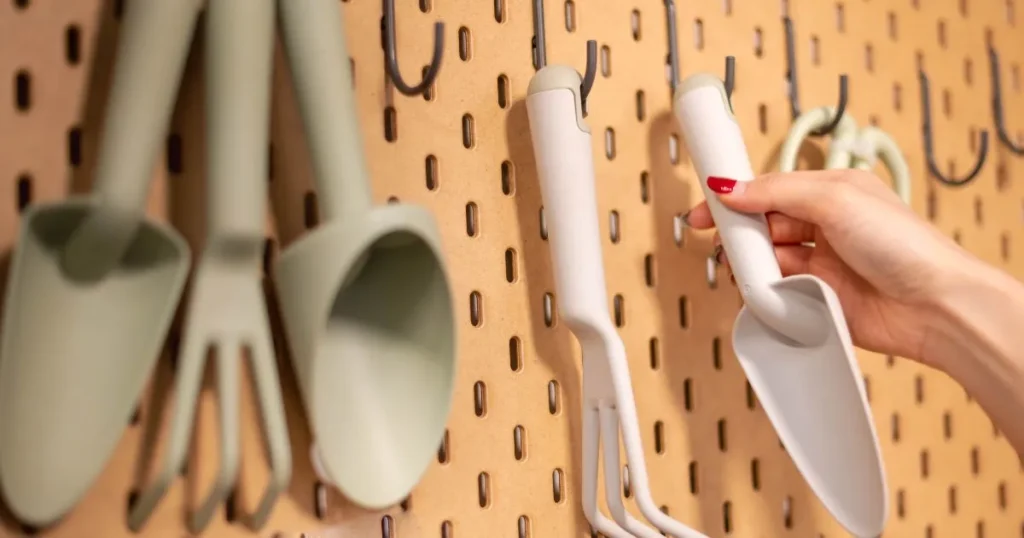
Types of Garden Tool Organizers
When it comes to garden tool organizers, there are several options to choose from. Each type has its own unique features and benefits, so it’s important to select one that suits your needs and space.
1. Wall-Mounted Organizers
Wall-mounted garden tool organizers are a popular choice for those looking to save floor space. These organizers typically feature hooks, racks, or pegboards that allow you to hang your tools vertically.
Benefits of Wall-Mounted Organizers
- Keeps tools off the ground.
- Easy to access and visually appealing.
- Customizable with additional hooks or shelves.
Popular Wall-Mounted Options
- Pegboard Systems: These versatile boards allow you to rearrange hooks and shelves as needed.
- Slatwall Panels: Similar to pegboards but with a sleeker design.
- Magnetic Strips: Perfect for holding small metal tools like trowels and pruners.
2. Freestanding Tool Racks
Freestanding garden tool organizers are ideal for larger spaces like sheds or garages. These racks often have multiple tiers or compartments to store tools of various sizes.
Benefits of Freestanding Racks
- Portable and easy to move.
- Can hold a large number of tools.
- Provides stability for heavy tools.
Popular Freestanding Options
- Tiered Tool Racks: These racks have multiple levels to store tools of different sizes.
- Tool Towers: Tall, vertical racks that maximize space.
- Bucket Organizers: Portable racks that fit inside a bucket for easy transport.
3. Tool Caddies and Carts
For gardeners who need to move tools around frequently, a garden tool organizer in the form of a caddy or cart is a great option. These organizers often have wheels for easy mobility.
Benefits of Tool Caddies and Carts
- Perfect for small gardens or patios.
- Allows you to carry multiple tools at once.
- Compact and easy to store.
Popular Caddy and Cart Options
- Rolling Tool Carts: These carts have wheels and multiple compartments for tools and supplies.
- Tool Totes: Lightweight and portable, these are ideal for small gardens.
- Garden Aprons: While not a traditional organizer, aprons with pockets can keep small tools handy.
4. DIY Garden Tool Organizers
If you’re on a budget or enjoy DIY projects, you can create your own garden tool organizer using materials like PVC pipes, pallets, or repurposed furniture.
Benefits of DIY Organizers
- Cost-effective.
- Customizable to your specific needs.
- Environmentally friendly.
Popular DIY Ideas
- PVC Pipe Organizer: Cut PVC pipes into sections and mount them on a board to hold tools vertically.
- Pallet Tool Rack: Use an old pallet to create a rustic organizer.
- Magnetic Tool Strip: Install a magnetic strip on your wall to hold metal tools.
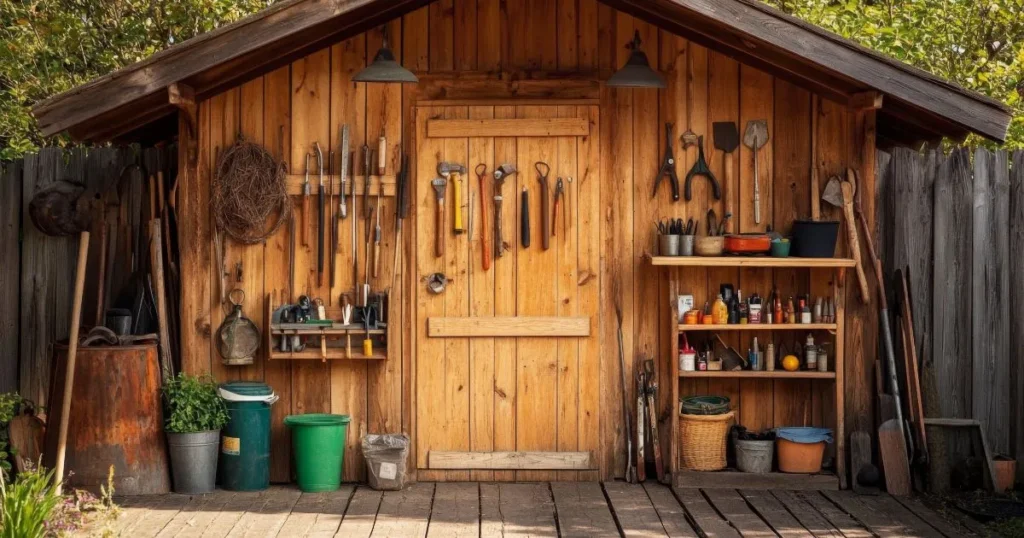
How to Choose the Right Garden Tool Organizer
Selecting the perfect garden tool organizer depends on several factors, including the size of your garden, the number of tools you own, and your storage space. Here are some tips to help you make the right choice:
1. Assess Your Storage Space
Before purchasing a garden tool organizer, measure your available space. Consider whether you need a wall-mounted, freestanding, or portable organizer.
2. Consider Your Tool Collection
Make a list of all your gardening tools, including their sizes and weights. This will help you choose an organizer that can accommodate everything.
3. Think About Accessibility
Choose an organizer that allows you to easily access your tools. Wall-mounted organizers are great for frequently used tools, while freestanding racks are better for bulk storage.
4. Set a Budget
Garden tool organizers come in a wide range of prices. Determine your budget and look for options that offer the best value for money.
5. Evaluate Durability
Look for organizers made from durable materials like metal, heavy-duty plastic, or treated wood. These materials will withstand the elements and last longer.
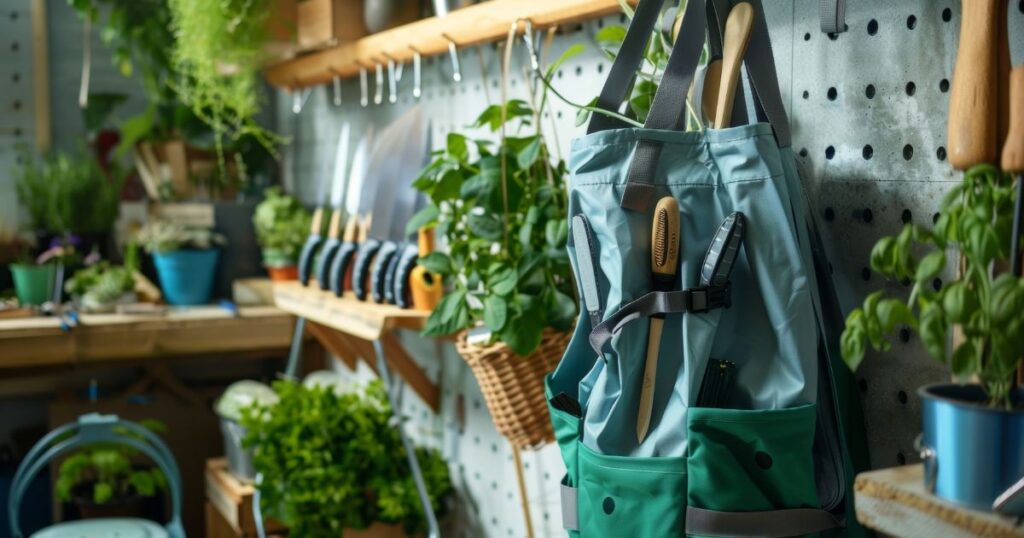
DIY Garden Tool Organizer Ideas
If you’re feeling creative, here are some DIY garden tool organizer ideas to inspire you:
1. PVC Pipe Organizer
Use PVC pipes to create slots for your tools. Mount the pipes on a wooden board or attach them directly to the wall.
Steps:
- Cut PVC pipes into 6-inch sections.
- Arrange the pipes vertically on a wooden board.
- Secure the pipes with screws or strong adhesive.
- Mount the board on your wall or shed.
2. Pallet Tool Rack
Repurpose an old wooden pallet into a garden tool organizer. Simply add hooks or nails to hang your tools.
Steps:
- Clean and sand the pallet to remove splinters.
- Attach hooks or nails to the slats.
- Mount the pallet on your wall or lean it against a sturdy surface.
3. Magnetic Tool Strip
Install a magnetic strip on your wall to hold metal tools like trowels and pruners.
Steps:
- Purchase a strong magnetic strip from a hardware store.
- Mount the strip on your wall at a convenient height.
- Attach your metal tools to the strip.
4. Bucket Tool Caddy
Turn a large bucket into a portable garden tool organizer by adding dividers or pockets.
Steps:
- Use a plastic or metal bucket.
- Add dividers or pockets to the inside or outside of the bucket.
- Fill the bucket with your tools and carry it around your garden.
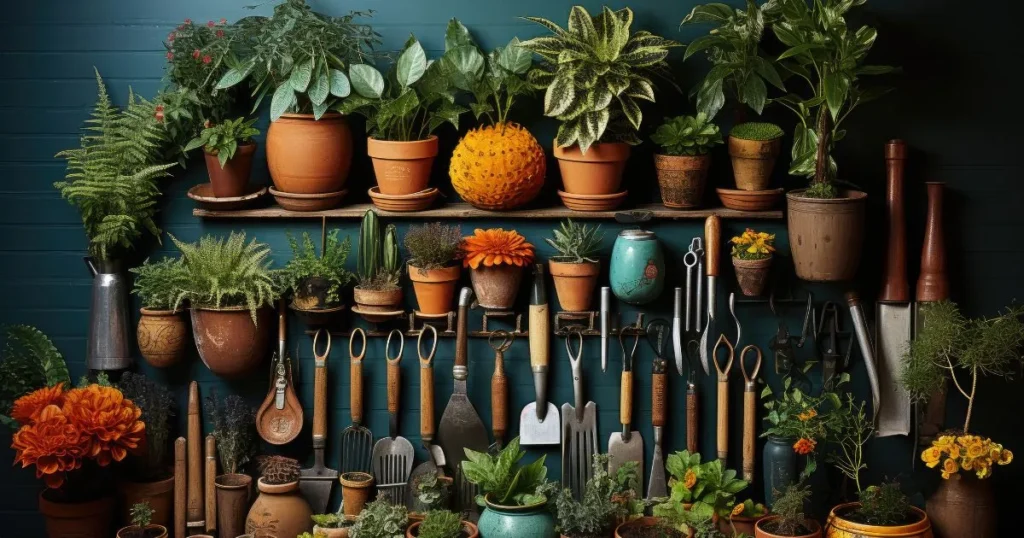
Maintaining Your Garden Tool Organizer
Once you’ve invested in a garden tools organizers, it’s important to keep it in good condition. Here are some maintenance tips:
1. Clean Your Tools Regularly
Dirt and moisture can damage your tools and organizer. Clean your tools after each use and let them dry before storing.
2. Inspect for Damage
Check your organizer periodically for signs of wear and tear. Replace any broken hooks or racks.
3. Organize by Frequency of Use
Store frequently used tools in easily accessible spots and seasonal tools in less accessible areas.
4. Protect Against Rust
Apply a light coat of oil to metal tools to prevent rust.
5. Keep Your Organizer Clean
Wipe down your organizer regularly to remove dirt and debris.
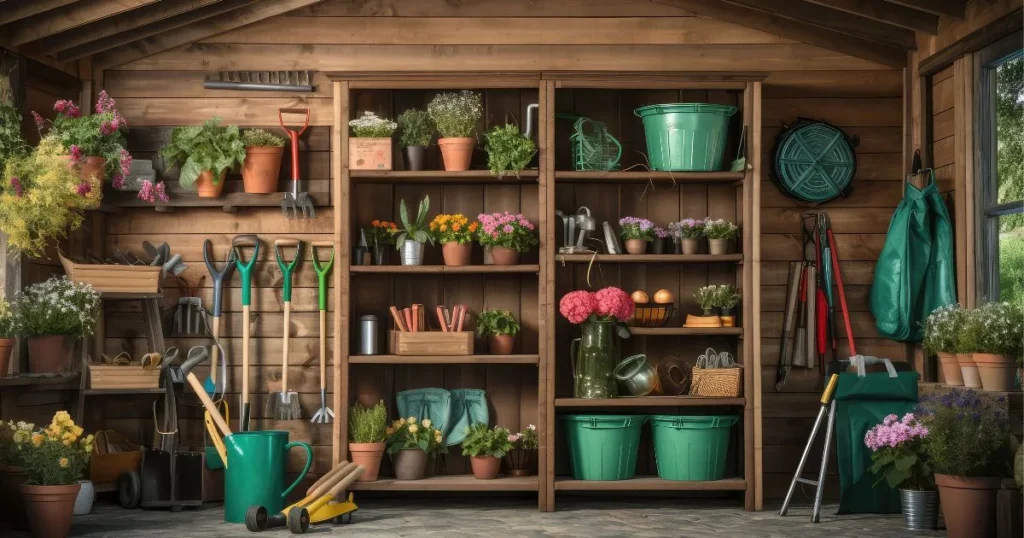
Conclusion
A garden tools organizers is an essential investment for any gardener. It not only keeps your tools in good condition but also makes gardening more enjoyable and efficient. Whether you opt for a wall-mounted rack, a freestanding organizer, or a DIY solution, the key is to choose a system that works for your space and needs. With the right garden tool organizer, you’ll spend less time searching for tools and more time enjoying your garden.
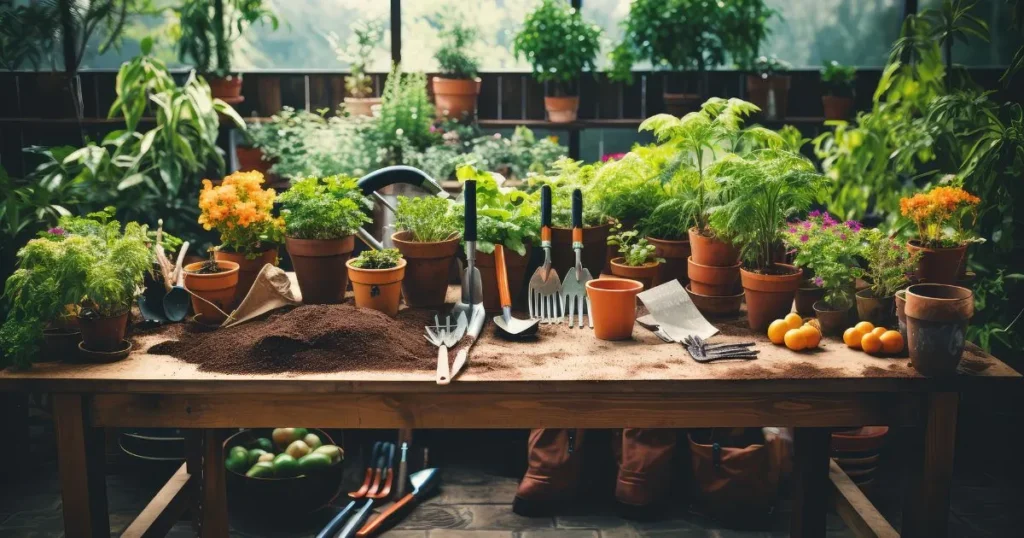
Frequently Asked Questions (FAQ)
1. What is the best type of garden tool organizer?
The best type of garden tool organizer depends on your specific needs. Wall-mounted organizers are great for saving space, while freestanding racks are ideal for larger tool collections.
2. How do I organize small garden tools?
Small tools like trowels and pruners can be stored in a tool caddy, magnetic strip, or PVC pipe organizer.
3. Can I build my own garden tool organizer?
Yes, DIY garden tools organizers are a cost-effective and customizable option. Popular materials include PVC pipes, pallets, and repurposed furniture.
4. How do I prevent my tools from rusting?
Clean and dry your tools after each use, and apply a light coat of oil to metal surfaces.
5. Where should I place my garden tool organizer?
Place your garden tool organizer in a dry, easily accessible location, such as a shed, garage, or garden corner.
6. How often should I clean my garden tools organizer?
Clean your organizer at least once a month to remove dirt and debris.
7. Can I use a garden tool organizers for other items?
Yes, you can use a garden tools organizers to store other outdoor items like hoses, gloves, and pots.

